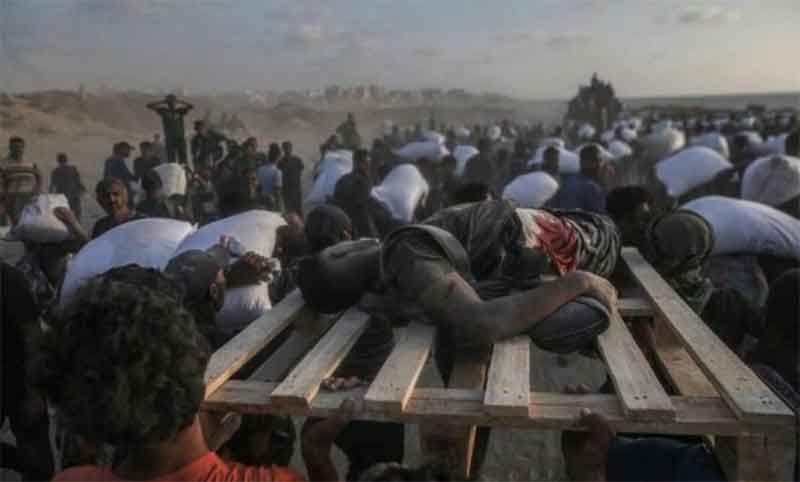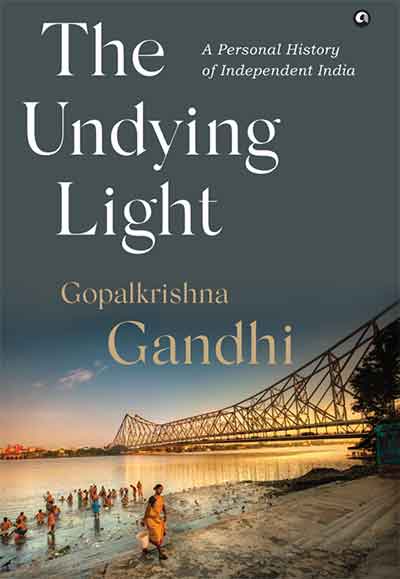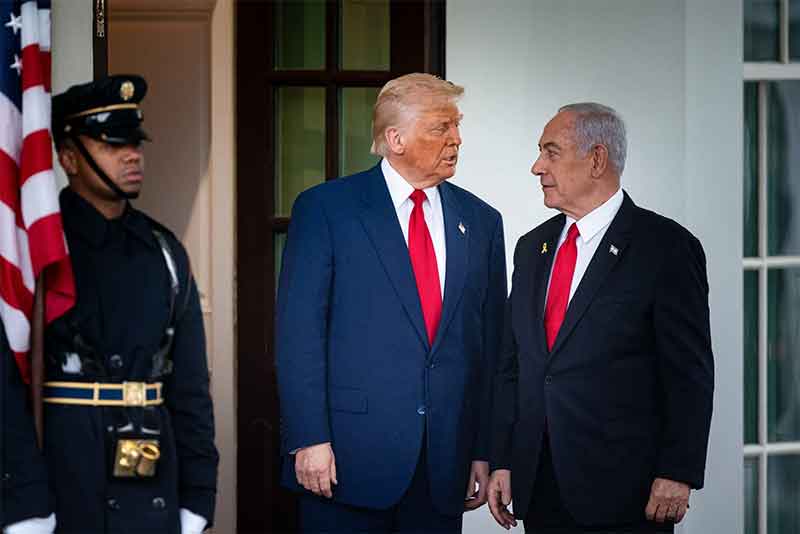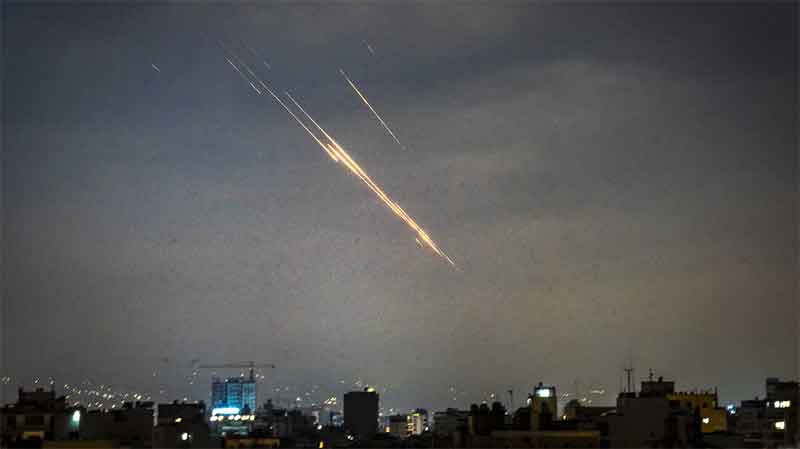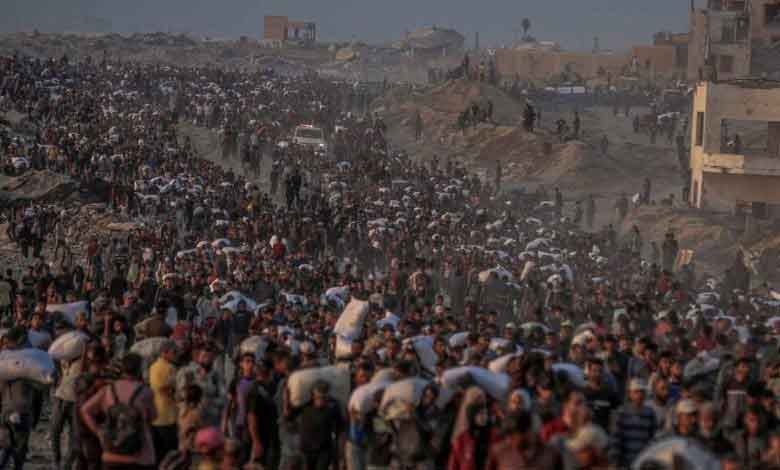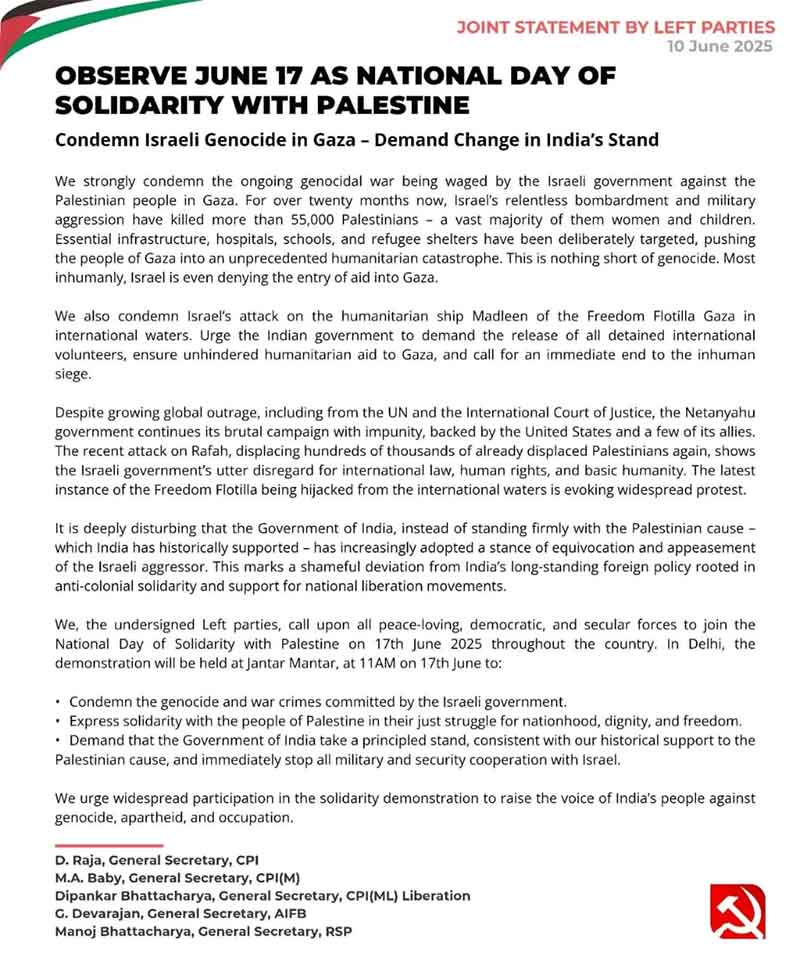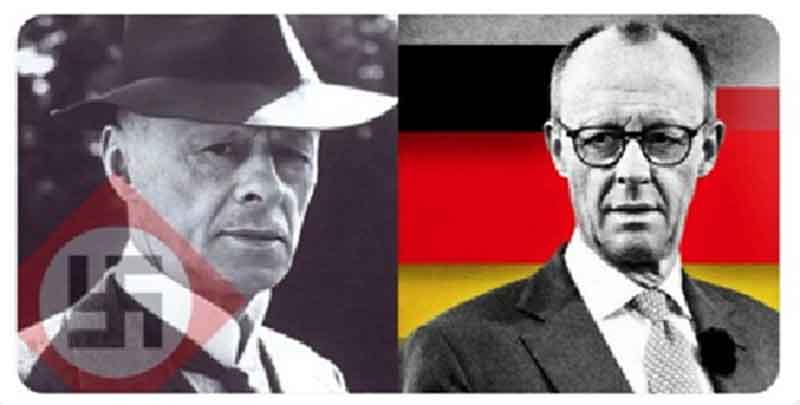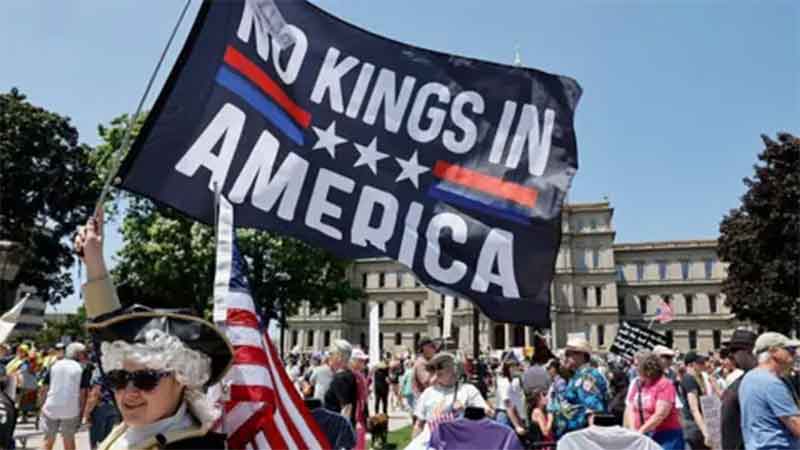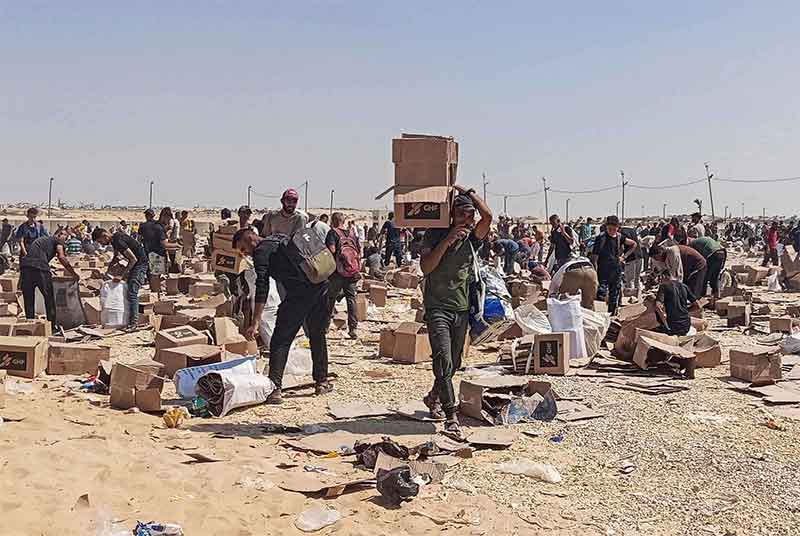
“Don’t destroy what you want to inherit.” This insightful advice is from Ebrahim Rasool, former South African ambassador to the United States and prominent anti-apartheid activist and peacebuilder. These wise words got me thinking about the kind of America, the kind of world, that we, and our children and grandchildren, want to inherit.
As we head into the 2024 presidential election, what is the post- November 5th America that we want to inherit? One permanently scarred by political polarization, social division and mistrust, and even political violence? Or one defined by a shared faith in our democratic values and a commitment to bridging the political divide, reducing tensions, and promoting political and racial reconciliation? Regardless of who wins the election, we have got our work cut out if we are to begin healing this country.
How can we go about building a more united, peaceful country for our children to inherit? There are three, key steps that I feel will be necessary in our quest to create a sustainable future for our country.
1. Promote a Widespread Culture of Peace Through Peace Education
Well, I believe that sustainable change comes from within, from adopting a new mindset and embracing a new way of resolving conflict. This much-needed perspective can be provided by peace education, a critical course of study that provides students, from a young age, with the tools needed to constructively handle conflict by communicating constructively and empathetically with others. “Nonviolent communication,” a groundbreaking, peace-oriented approach to communication pioneered by Dr. Marshall Rosenberg, is a key element of peace education. Peace education also educates students about topics that are relevant to peace like human rights, democracy, and justice, helping students better understand and positively engage as citizens with the world around them.
Furthermore, I believe that peacebuilding concepts should be fully integrated into the entire curriculum. For example, why not teach political science undergrads how politics and diplomacy, rather than sowing discord and divisiveness, can help build a more peaceful society? The same for economics; economics students could take econ courses in “peace economics,” a subfield championed by the Institute for Economics and Peace, which explores the costs of war, the economic causes of conflict, and how economic policies can help advance sustainable development. Peacebuilding can be built into courses in a range of other disciplines, like journalism, science, and psychology!
If equipped with an understanding of the connection between their disciplines and peacebuilding, the next generation of American leaders will be able to advocate for mindsets and policies that advance, rather than hinder, peace.
So, education: the first piece of the puzzle! Healing and uniting America starts with embracing a peace-oriented mindset and incorporating this key perspective into school curricula at the elementary, high school, and college levels. Once a “culture of peace” and appreciation for peacebuilding- in particular, finding common ground- is inculcated in our young, the next step will be infinitely easier to achieve.
2. Launch a Massive, Collective Peacebuilding Effort
This next step, “Massively Parallel Peacebuilding,” or MPP, is a concept introduced by acclaimed peace scholars and sociologists Heidi and Guy Burgess. MPP refers to a holistic, all-hands-on-deck approach to peacebuilding that requires many people to advance peacebuilding within their areas of expertise. For example, journalists could promote peace by practicing “peace journalism,” which advances conflict resolution by accurately representing all sides of a conflict, shedding light on underrepresented voices, and opposing sensationalism and misinformation. Politicians, such as those from the National Governors Association, who recently launched their “Disagree Better” initiative, could collectively oppose fear mongering and embrace rhetoric to unify our country. Our scientists, appreciating how climate change, nuclear weapons, and emerging technologies like AI threaten peace and heighten conflict, could embrace a science of peace, important work organizations like the Bulletin of the Atomic Scientists are currently engaged in.
With so many people involved in this collective peacebuilding effort, how might we coordinate it? Heidi and Guy Burgess of Beyond Intractability offer a solid roadmap, consisting of 10 clear steps/challenges that the whole society should engage in, including developing a collective, democratic vision of what we want our society to look like and resisting “divide and conquer” politics. An exhaustive list of the Burgesses’ challenges and advice regarding each challenge can be viewed on their website:
But let’s take a moment to consider what a collective, democratic vision of the United States could look like?
Ebrahim Rasool offers a 7-step path toward reconciliation, which I believe must be taken into account when creating this shared vision for peace and democracy:
- Understand that “the other is here to stay”– the “other side” won’t go away, whether you’re talking about people of a different political background, ethnicity, religion, etc. This is a critical first step to a peaceful coexistence.
- Start with the end– As the Burgesses stress in their Massively Parallel Peacebuilding checklist, it’s important to envision the future you want to build and then work backward to determine how you want to create it.
- Don’t destroy what you want to inherit- Seek to effect change through peaceful means always- creating change violently is unsustainable and will lead to much more harm than good.
- Isolate the extremes, but unite the middle ground– Extremism of any kind is a key cause of polarization, yet the majority of people have more moderate perspectives. Foster unity by appealing to people’s common humanity and the many similarities between diverse groups.
- Ideologies should always have a “human lens,” that humanize the other– Dehumanization is counterproductive and downright dangerous. Despite how strong the disagreement might be, always humanize people who think differently.
- There is “no easy redemption. You have to confront the truth.”– For true reconciliation to occur, the truth of past and current injustices and the cause of the conflict can’t be ignored. Recognizing the truth of the conflict and fostering accountability for one’s actions is critical to reconciliation. The problem is the truth is contested by different groups.
- Find the intersection between justice and peace– Being only concerned about justice can make building sustainable peace impossible, just as sacrificing justice for the sake of peace will prevent reconciliation.
And these are all points to consider as we build a 21st century democratic vision of America, an America that is not characterized by polarization, injustice, and even violence, but unity, justice and peace. And it all starts with fostering a culture of peace in our schools. Civics classes focused on issues like politics, democracy, and human rights should challenge students to challenge this status quo of discord and divisiveness and use their imagination and critical thinking skills to imagine a more just and peaceful America. And their teachers, parents, and political representatives should actively encourage this and engage in this process themselves, modeling good behavior.
3. Invest in and Create “Infrastructure for Peace”: Institutions to Manage and Coordinate Peacebuilding
So, we’ve got a culture of peace, promoted by peace education, and our massively parallel peacebuilding strategy, guided by our grand vision of what America could be. This peacebuilding process will rely on and give rise to institutions that can coordinate efforts to achieve our peacebuilding goals. For example, Departments of Peacebuilding (DoPs) at all levels- city, state, and national- may be necessary to help in framing concepts more productively, pushing back against “divide and conquer politics,” and coordinating peacebuilding efforts.
Another institution, a Truth and Reconciliation Commission, may be the key to promoting lasting racial and political reconciliation in the United States, just as the Truth and Reconciliation Commission (TRC) in South Africa helped put an end to apartheid by encouraging truth telling and accountability about the human rights violations committed during the apartheid era. Coincidentally, proposals for a DoP and Truth and Reconciliation Commission have been put forth by peace-oriented politicians like US Representative Barbara Lee. Peace organizations like The Peace Alliance, co-founded by 2024 presidential candidate Marianne Williamson, are currently championing the effort to create a US DoP and promote truth and reconciliation. Now, it’s a matter of mustering up the political will to establish these institutions that can complement and work with civil society organizations that serve as Infrastructure for Peace (I4P) in their own right at the grassroots level.
And that’s one key point regarding establishing institutions for peace. While they might be at the city, state, national, or international levels, they must constantly be informed by and respond to activity from the local level. They must collaborate and coordinate with local peacebuilders and civil society organizations to drive lasting change.
How Do We Get There?
Where do we start promoting peace education, the Massively Parallel Peacebuilding (MPP) Strategy, and I4P to coordinate our collective effort? Well, the first critical point is that this whole national process will take time- generations, even. But, if we plant the seeds of a sustainable culture of peace now and engage in some of the most urgent MPP tasks now- like pushing back against divisive/extremist political rhetoric and starting to build common ground with our “adversaries”- we’ll soon realize that building a united USA is feasible.
Second, while certain politicians like Representative Barbara Lee and presidential candidate Marianne Williamson are steadfast proponents of this holistic vision of peacebuilding, there are not enough politicians who truly prioritize peace, as of right now. Which means it’s our responsibility to demand it. We must unite to actively advocate for peace education and a shift in how our society and its institutions engage in peacebuilding. Key to this is allocating money from the national budget to peace efforts; as Dr. King said, budgets are “moral documents.”
Social movements, which galvanize thousands and even millions of people into action toward a common goal, will be particularly crucial in this respect. Rather than just pushing for social and economic justice- important goals in their own right- social movements should start to protest against polarization of all kinds and call for policies and institutions that prioritize peacebuilding, starting with peace education. Specifically, grassroots civil society organizations and social movements- which will form the foundation of this 3-fold national peacebuilding strategy- could create a campaign pushing for the creation and incorporation of peace curricula in school. They could actively disseminate the Massively Parallel Peacebuilding list (which I imagine will evolve as more people weigh in) to their members and via social media to engage people outside of the peace movement as well. Finally, they could advocate for the creation of inclusive grassroots and governmental I4P like DoPs, mutual aid organizations, and truth and reconciliation programs, even though I imagine this will happen more later on as more people get involved in the peacebuilding movement.
Subscribe to Our Newsletter
Get the latest CounterCurrents updates delivered straight to your inbox.
How social movements are conducted can touch the hearts and minds of the whole American public and effect lasting change, as the Civil Rights movement did. This brings me to my last key point, stressed by conflict expert Amanda Ripley: the vital role relationships play in driving change toward peace. Social movements that “shred” relationships and intentionally or even inadvertently sow division in society must adjust their tactics to strive to appeal to a broader audience.
As we embark on a peace movement to unify our country, let’s make sure we preserve and strengthen relationships between diverse groups. Doing this will ensure that, as we emerge from the 2024 election and start our work healing our country, we do not destroy what our children and grandchildren will inherit.
Jacopo De Marinis is a MSc student in Peace and Conflict Studies at Ulster University and is pursuing a career in peacebuilding, with a focus on intergroup conflict and truth and reconciliation processes. He can be reached at [email protected].














